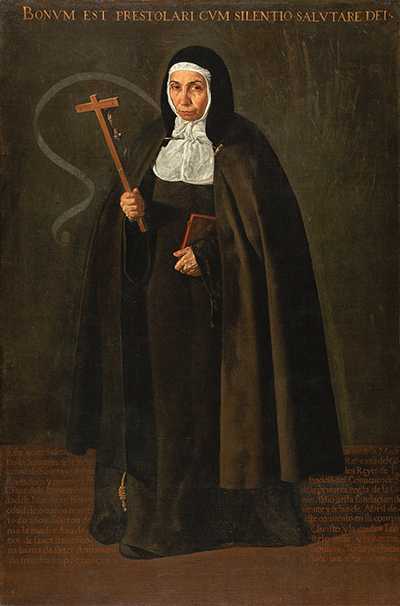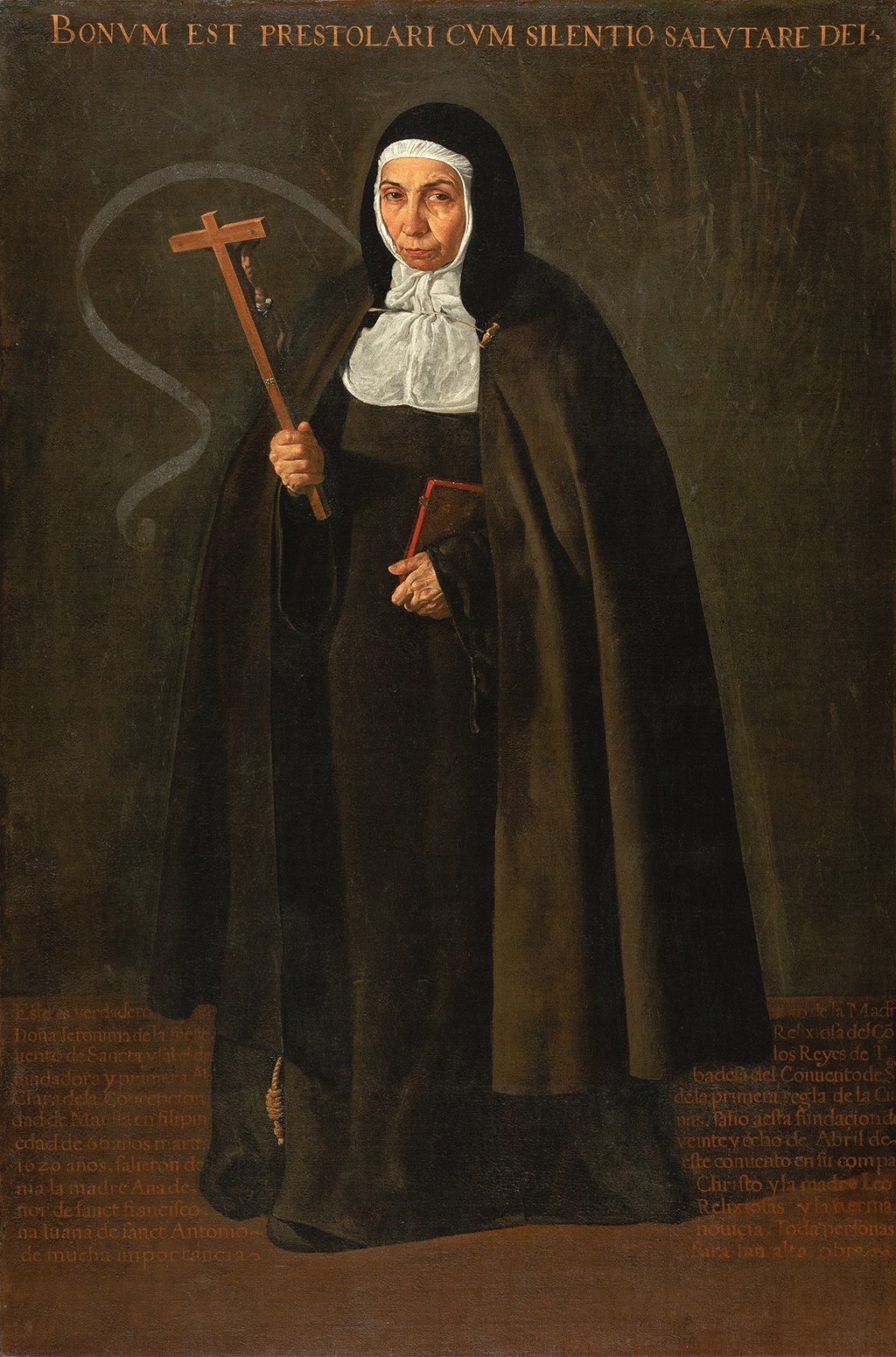The Nun Jerónima de la Fuente is an intriguing portrait by Diego Velazquez that features a rare use of lettering directly upon the canvas. He did not capture religious figures within personal portraits too frequently, making this a fairly unique composition within his oeuvre.
The artist produced this portrait painting back in 1620 and it depicts a titular nun called Jerónima. Her facial expression is decidely stern, as if she was not happy to be portrayed in this way but it may actually just have been more about the seriousness with which she took her role within the Church. Jerónima de la Asunción spent two months living in Seville prior to heading out to the Philippines, where no doubt she would have been tasked with spreading the word of God to new audiences. It is believed that this work was commissioned by a vicar from the Santa Isabel convent in Toledo, which is a picturesque Spanish town. The region itself was made famous by the work of El Greco, who spent time living in Spain himself and produced this stunning View of Toledo.
The painting itself features a nun in her traditional outfit, which is barely any different to the ones worn today, holding a wooden cross in her right hand, whilst holding a book, presumably the bible, in the left hand. She wears a dark full length dress which touches on the floor, with a long coat over the top. She has a white headdress, perhaps made from silk, which covers most of her head and reaches down to her chest. The background here is simple, as she is captured in front of a plain wall, with a light floor under her feet. Lettering has then be added above her head and then in smaller lettering across the floor on which she stands. Finally, there is a flourish of light grey around the cross, which then also forms a slight outline around her coat.
Whilst on the subject of Spanish portrait paintings, Francisco de Goya was another highly skilled master who produced stunning and memorable artworks that would lead European art during his own period of prominence. He was not someone to specialise in traditional front-on portraits as seen in the career of Velazquez, but produced a wider range of styles and compositions within his oeuvre, which is perhaps part of the reason behind his success. Additionally, he was also involved in other mediums besides just oil painting, including a whole host of etchings that offered an alternative series of work again. He also became involved in history painting, with Second of May 1808 and Third of May 1808 becoming two of his own, and Spain's, most famous paintings of all time.





